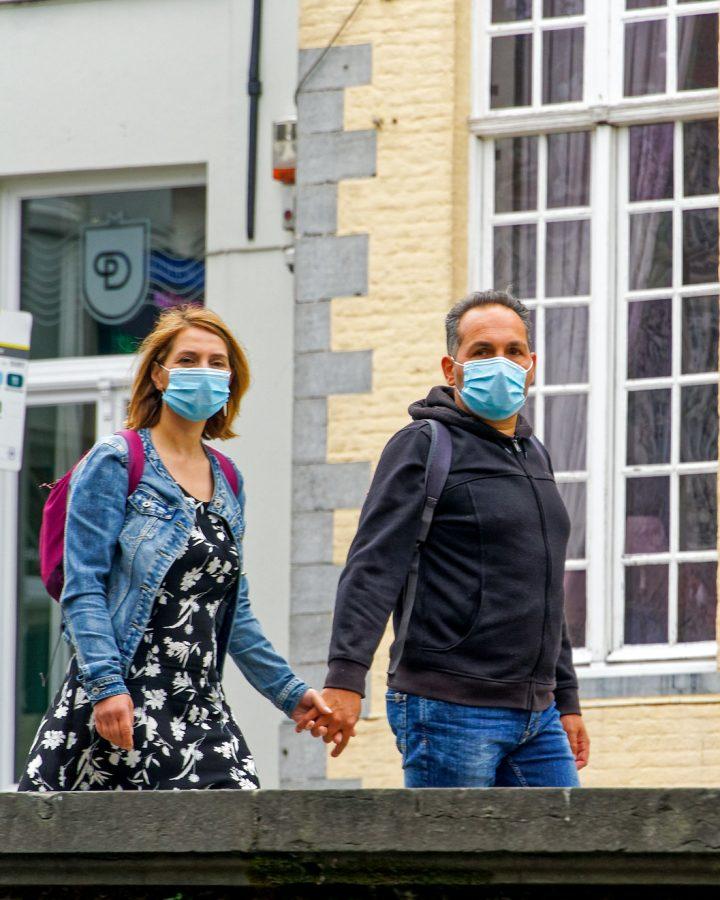As colder weather begins to roll in, countries in Europe are seeing COVID-19 cases begin to increase. The World Health Organization and the European Centre for Disease Prevention and Control (ECDC) recorded heavy spikes in Europe.
Ireland has become the first European country to impose another lockdown, and many leaders in Europe are imposing new restrictions with rising cases.
As of October 25, Italy was the latest European country to impose new restrictions on its citizens amidst rising COVID-19 cases occurring in the country.
France announced 50,000 new infections. Poland, Germany and Spain have also reported surges in their countries as well.
The United States announced 82,000 new cases as of Sunday, October 25.
Countries in Europe are facing the possibility of seeing another lockdown if they
are unable to get their numbers to slow, according to Jennifer Nuzzo, a senior fellow for global health at the Council on Foreign Relations.
In Italy, Prime Minister Guiseppe Conte announced new restrictions for the country. Bars and restaurants are to close by 6 p.m., and the complete shutdown of gyms, pools, and movie theaters are just some of the new restrictions the country has begun to impose.
According to the Washington Post, the new restrictions in Italy are some of the most strict since the country’s lifting of its lockdown in May, after they had seen a devastating spike in cases and deaths.
The Washington Post stated: “. . . as economies have reopened and colder weather pushes people indoors, several countries are now reporting case numbers that are eclipsing records set in the spring.”
Spain has also announced new restrictions, after having flattened much of their curve by going into a three-month lockdown in March.
New restrictions for Spain include a nighttime curfew, banned gatherings of more than 6 people, and regional governments having the authority to restrict movement. Prime Minister Pedro Sanchez warned of “tough months to come” according to the Washington Post.
Ireland became the first European country to go back under lockdown. The Prime Minister of Ireland, Michael Martin, announced that schools in the country would remain open.
Poland turned their largest athletic stadium into a field hospital in order to free up capacity in their hospitals to accommodate for the spike seen in the country.
Wales announced a 17-day “firebreak” lockdown, which means that it is a full lockdown with only critical workers and those who cannot work from home being allowed to travel for work.
Citizens of Wales who are not essential workers are expected to stay indoors, and non-essential retail shops, leisure services, and restaurants will be closed.
British Prime Minister Boris Johnson introduced a three-tier regional approach that cities and counties will be labeled according to their COVID-19 case levels.
London and York, both being tier-2, banned socializing with people from other households indoors. Counties like Lancashire and Liverpool are both tier-3 and contain the tightest restrictions.
According to European News, the World Health Organization (WHO) “has warned that intensive care units in a number of European cities could reach maximum capacity in the coming weeks if the number of infections doesn’t slow.”
Many other European countries are following each other’s leads on new restrictions, with the closing of restaurants and banning of gatherings of more than ten being the most common restrictions.
In Germany, Chancellor Angela Merkel stated in her weekly video broadcast, “Difficult months are ahead of us… How winter will be, how our Christmas will be, that will be decided in these coming days and weeks, and it will be decided by our behaviour.”
The United States, according to European News, is currently the country with the most documented cases and with the most COVID-related deaths as compared to other European countries, based on reported records collected since July.
“The US reported more than 69,100 new Covid-19 infections Friday- the most in a single day since about 71,300 were reported July 29, according to John Hopkins University data,” wrote European News
With the winter months fast approaching, and cold and flu season about to ramp up, worries about a second wave approaching and being worse than the first are on global leaders and global health leaders minds.
Many European leaders do not want to have another lockdown like in March, but with cases rising increasingly again, countries across the globe fear of another lockdown if they can not get their cases to slow.





















































